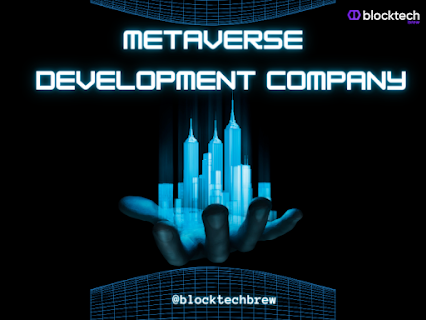How to Create Real Estate in Metaverse?
Real estate is a valuable investment in the physical world, and it is also becoming increasingly valuable in the virtual world, or metaverse. With the rise of metaverse platforms like Decentraland and Somnium Space, people are starting to invest in virtual land, properties, and assets.
Step 1: Choose a Metaverse Platform
The first step in creating real estate in metaverse is to choose a platform that suits your needs. Decentraland, Somnium Space, The Sandbox, and Crypto Voxels are some of the most popular metaverse platforms that offer virtual land and properties. Each platform has its own rules, features, and communities, so you should research and compare them before making a decision. You can also visit these platforms and explore their virtual worlds to get a better understanding of what they offer.
Step 2: Acquire Virtual Land
Once you have chosen a metaverse platform, the next step is to acquire virtual land. Virtual land is a digital asset that is represented by a non-fungible token (NFT) on the blockchain. NFTs are unique digital assets that can be bought, sold, and traded like physical assets. You can purchase virtual land in a metaverse platform's marketplace or through a third-party NFT marketplace like OpenSea or Rarible.
Virtual land is usually sold in parcels, which are equivalent to physical plots of land. The size, location, and features of virtual land parcels can affect their value and potential uses. For example, virtual land near popular landmarks, events, or communities can be more valuable than isolated land. You should also consider the zoning and regulations of a metaverse platform when choosing virtual land. Some platforms have restrictions on what can be built or displayed on virtual land, while others offer more creative freedom.
Step 3: Design and Build Your Real Estate
After acquiring virtual land, the next step is to design and build your real estate. Metaverse platforms usually provide tools, templates, and tutorials for creating 3D models and environments. You can also use third-party tools like Blender, SketchUp, or Unity to create more complex and customized designs.
The design and function of your real estate depend on your goals and target audience. You can create virtual homes, offices, stores, galleries, or any other type of building. You can also add interactive elements, animations, sounds, or games to enhance the user experience. You should also consider the aesthetic and technical quality of your real estate, as well as its compatibility with different devices and platforms.
Step 4: Market and Monetize Your Real Estate
Once your real estate is designed and built, the next step is to market and monetize it. Metaverse platforms usually have built-in features for showcasing and selling virtual assets, such as virtual tours, auctions, and listings. You can also use social media, blogs, or newsletters to promote your real estate and attract potential buyers or tenants.
The value and revenue of your real estate depend on several factors, such as its location, quality, demand, and competition. You can sell your virtual land and properties for cryptocurrency or fiat currency, or you can lease or rent them to other users. You can also monetize your real estate through in-app purchases, advertising, or sponsorship. The key is to find a balance between profitability and user experience, and to adapt to the evolving trends and demands of the metaverse.
Step 5: Maintain and Improve Your Real Estate
Creating real estate in metaverse is not a one-time effort, but an ongoing process of maintenance and improvement. Metaverse platforms are dynamic and evolving ecosystems that require continuous updates, bug fixes, and feature enhancements. You should also listen to feedback from users and adapt your real estate accordingly.
Some ways to maintain and improve your real estate in metaverse include:
- Regular Updates: Keep your real estate up-to-date with the latest software updates, bug fixes, and security patches. This will ensure that your real estate runs smoothly and safely for users.
- User Feedback: Listen to user feedback and suggestions for improving your real estate. You can gather feedback through surveys, forums, or social media.
- Content Updates: Keep your real estate fresh and engaging by adding new content, features, or events. This will attract new users and retain existing ones.
- Community Building: Build a community around your real estate by engaging with users, hosting events, or collaborating with other creators. This will create a sense of belonging and loyalty among users.
- Analytics: Track the performance of your real estate with analytics tools, such as heatmaps, user behavior, or conversion rates. This will help you identify areas for improvement and optimize your strategy.
Conclusion
Creating real estate in metaverse can be a rewarding and lucrative venture, but it also requires planning, creativity, and adaptability. By following the steps outlined in this blog, you can create a virtual property that stands out in a crowded metaverse market. Remember to choose a metaverse development platform that suits your needs, acquire virtual land, design and build your real estate, market and monetize it, and maintain and improve it over time. With the right strategy and mindset, you can unlock the potential of the metaverse and create a virtual world that users love to explore and interact with.




Comments
Post a Comment